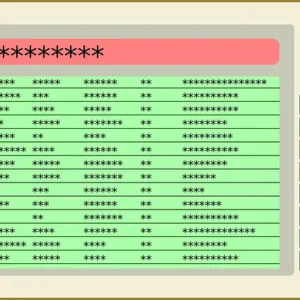What is the FIFO method?
The FIFO method, also known as First-In-First-Out, is an inventory valuation and management technique to track and manage the flow of goods. It operates on the principle that the first items purchased or produced are the first to be sold or used. Thus, the oldest inventory is assumed to be sold or used first, while the newest inventory remains in stock.
This method ensures that inventory costs are allocated accurately since the current selling price corresponds to the oldest costs incurred. FIFO is widely used in various industries, including retail, manufacturing, and logistics, to maintain accurate inventory records and make informed business decisions.
Understanding FIFO method
The FIFO method, or First-In-First-Out, is a popular inventory management approach that ensures the oldest inventory is used or sold first. According to this model, the first goods acquired are the first to be consumed or sold, resulting in a chronological inventory flow. By using FIFO, businesses can accurately allocate costs to match the current selling prices, providing a more realistic representation of inventory value.
This method is particularly beneficial for industries with perishable or time-sensitive products, as it helps prevent spoilage and obsolescence. The FIFO method is widely recognized for its simplicity and practicality when it comes to maintaining accurate inventory records and effectively managing stock. Both IFRS and US GAAP recognize only First in First Out.
FIFO practical example
Let’s consider a practical example of the First in First Out method using a table. Suppose a small retail store sells smartphones and tracks its inventory using the First in First Out method.
Suppose the store purchased smartphones on three different occasions:
- On January 1st, 2023, they bought 10 smartphones at $200 each.
- On February 15th, 2023, they bought 20 smartphones at $220 each.
- On March 30th, 2023, they bought 15 smartphones at $240 each.
| Date | Quantity Purchased | Cost per Smartphone | Total Cost |
|---|---|---|---|
| Jan 1, ’23 | 10 | $200 | $2,000 |
| Feb 15, ’23 | 20 | $220 | $4,400 |
| Mar 30, ’23 | 15 | $240 | $3,600 |
Now, let’s assume that during the year, the store sold 30 smartphones. We’ll use the FIFO method to calculate the cost of goods sold and ending inventory.
- The first 10 smartphones sold came from the January 1st batch, costing $200 each.
- The next 20 smartphones sold came from the February 15th batch, costing $220 each.
Cost of goods sold (COGS) = (10 * $200) + (20 * $220) = $2,000 + $4,400 = $6,400
Ending inventory = 15 smartphones from the March 30th batch, costing $240 each.
Ending inventory value = 15 * $240 = $3,600
So, based on the First in First Out method, the cost of goods sold during this period is $6,400, and the ending inventory value is $3,600.
Difference between FIFO and LIFO
| Aspect | FIFO Method | LIFO Method |
|---|---|---|
| Principle | Oldest inventory is used/sold first | Newest inventory is used/sold first |
| Cost Allocation | Matches current prices with oldest costs | Matches current prices with newest costs |
| Inventory Valuation | Reflects current market value | Reflects historical purchase prices |
| Financial Statements | Generally results in lower COGS | Generally results in higher COGS |
| Inflation Effect | Minimal impact during inflation | Can result in lower taxes during inflation |
| Perishable Goods Handling | Reduces risk of obsolescence | May increase risk of obsolescence |
| Industry Suitability | Ideal for industries with perishable goods or changing market prices | Commonly used in industries with stable or decreasing prices |
Advantages of the FIFO method
- Accurate Cost Allocation: First in First Out matches current selling prices with the oldest costs, providing a more realistic representation of inventory value.
- Financial Statement Accuracy: It generally results in a lower cost of goods sold (COGS), leading to higher gross profit and net income.
- Perishable Goods Management: FIFO reduces the risk of obsolescence by ensuring the oldest inventory is used or sold first.
- Industry Adaptability: It is suitable for industries with perishable goods or volatile market prices.
Limitations of the FIFO method
- Distorted margins: FIFO can result in distorted profit margins when older, lower-cost inventory is sold at current higher market prices.
- Inventory valuation: It may not reflect the actual replacement value of inventory, leading to potential inaccuracies in financial statements.
- Complex tracking: It requires meticulous record-keeping, especially in large-scale businesses.




[…] valuation methods like FIFO (First-In, First-Out) and LIFO (Last-In, First-Out) determine how a company assigns costs to its […]
[…] the realm of Manufacturing Financial Reporting, three key inventory valuation methods—FIFO (First In, First Out), LIFO (Last In, First Out), and Weighted Average—play a significant role in […]